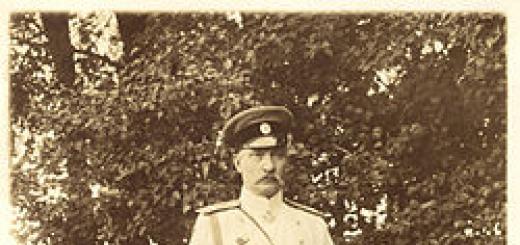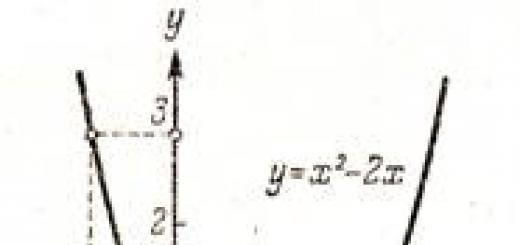Lombroso was born on November 6, 1835 in Verona into a wealthy Jewish family. He studied literature, linguistics and archeology at the universities of Padua, Vienna and Paris. Already at the age of 19, while studying Faculty of Medicine University of Pavia, published his first articles on psychiatry, namely on the problem of cretinism. These works immediately attracted the attention of specialists. In 1859, Lombroso interrupted his scientific career and went to work as an army surgeon. This practice allowed him to collect a wealth of material for research. In 1871, a young specialist headed a psychiatric hospital in Pesaro.
In 1876, Lombroso received the title of professor forensic medicine and public hygiene at the University of Turin, and in addition to them the Department of Psychiatry. In the same year he wrote his most important and influential work, L'Uomo delinquente (The Criminal Man), which went through five editions in Italian and was translated into various European languages. What is the main essence of this famous book?
While serving as a military doctor, Lombroso took part in anti-gang campaigns in the south of the country. It was then that he conducted his first studies on anthropometry. Recording the relevant data of lawbreakers using a special device - a craniograph, with which Lombroso measured the size of parts of the face and head, he came to the conclusion: as a result of a poor, hard life in poor Southern Italy, an “abnormal” type of people with various anatomical and mental abnormalities arose. Cesare classified them as a special anthropological variety - criminal man and published his findings in the work “Anthropometry of 400 Offenders”. This manual served as a textbook for many detectives of that time.
According to Lombroso's theory of the born criminal, criminals are not made, but rather born, because criminal types are simply... degenerates. Therefore, it is supposedly impossible to re-educate them. It is better to preventively deprive such “Neanderthals” of freedom or life itself.
It was Lombroso who identified four main types of criminal characters: murderer, thief, rapist and swindler. This typology continues to this day.
He believed that criminal tendencies can be determined by appearance. Available features– “stigmata”: flat nose, low forehead, massive jaws, and so on. All of them, in his opinion, speak of a lag in development and villainous inclinations characteristic of primitive man and animals. In view of this, Lombroso proposed to involve, in addition to judges, doctors, anthropologists, and sociologists in working with criminals, and demanded that the question of guilt be replaced by the question of social harmfulness of the “cave” type.
Lombroso put forward the famous formula that formed the basis of the most popular algorithm in criminology, the so-called criminal predisposition. According to it, it is proposed to correlate the average size of anthropological characteristics of convicts with the number of minors who drink alcohol. The result obtained, multiplied by the conditional indicator “E”, is considered as a “frequency characteristic of a generalist.” This formula allows us to identify the causality of crime, which general level always comes down to the length of certain parts of the body.
In addition, it was Lombroso who invented the first lie detector. He began measuring the blood pressure of suspects during their interrogations by investigators and claimed that he could easily tell when those under arrest were lying. The results of his research, as the Italian believed, are of great value, because monitoring a person’s physiological reactions helps not only to identify hidden information, but also helps to establish the innocence of the suspect.
Criticism of Lombroso's discoveries was not long in coming. Many contemporaries of the Italian professor have already noted that the theory of anthropological crime overlooks the cornerstone point: the social factor. Because of this in late XIX century, the theory was recognized as generally erroneous, although some of its developments are still important today. For example, a method for recording human anthropological data.
In 1863, Lombroso published the book “Genius and Madness,” in which he drew a parallel between great men and madmen. This is what he wrote in the preface: “When, many years ago, being as if under the influence of ecstasy, during which the relationship between genius and insanity seemed to me as if in a mirror, I wrote the first chapters of this book in 12 days, then “I admit, even I myself was not clear what serious practical conclusions the theory I created could lead to.”
That is, relying on an ecstatic state, the doctor, according to his own theories, initially puts himself in the position not of a doctor, but of a patient...
Overall, the book is shining example abuse of medical authority. In fact, Lombroso left and right handed out disappointing diagnoses to the greatest representatives of humanity. Since the celebrities about whom the professor writes were dead by that time, they, unfortunately, did not have the opportunity to refute the offensive verdicts.
The psychiatrist reasoned in absentia, based solely on personal gullibility or addiction to idle rumors about the characters and habits of great people, whose biographies were densely overgrown with all kinds of legends. Lombroso wrote about the physical similarity of his heroes to madmen, about the influence of various phenomena (atmospheric, heredity, etc.) on genius and insanity, cited numerous evidence of mental deviations of a medical nature in a number of writers, and also listed what he considered to be strange features of genius individuals : “Ampere was already a good mathematician at the age of 13, and Pascal, at the age of 10, came up with the theory of acoustics, based on the sounds produced by plates when they are placed on a table. Many of them were extremely drug and alcohol abusers. Thus, Haller consumed enormous amounts of opium, and, for example, Rousseau consumed coffee. Many did not feel the need to work quietly in the quiet of their office, but as if they could not sit in one place and had to constantly travel. No less often they also changed their professions and specialties, as if their powerful genius could not be content with just one science and fully express itself in it...
All geniuses have their own special style, passionate, vibrant, colorful, which distinguishes them from other healthy writers and is characteristic of them, perhaps precisely because it is developed under the influence of psychosis. This position is confirmed by the own recognition of such geniuses that all of them, after the end of ecstasy, are not only incapable of composing, but also of thinking...
The main signs of the abnormality of these great people are expressed in the very structure of their oral and written speech, in illogical conclusions, in absurd contradictions. Was not Socrates, the brilliant thinker who foresaw Christian morality and Jewish monotheism, crazy when he was guided in his actions by the voice and instructions of his imaginary Genius, or even simply by a sneeze? Almost all geniuses gave great importance your dreams."
However, in conclusion, Lombroso admitted that based on the above, one cannot come to the conclusion that genius is insanity, although in the turbulent life of the great there are noticeable moments when they resemble madmen, and in their mental activity there are many common features with them: increased sensitivity , exaltation alternating with apathy, unconsciousness of creativity, severe absent-mindedness, enormous vanity and the like. Just as there are crazy people among brilliant people, so there are crazy geniuses among crazy people. At the same time, in many outstanding personalities one cannot find the slightest sign of insanity.
Cesare Lombroso, apparently, was the first to pay attention to the widespread use of tattoos among criminals, and this determined his attitude towards tattoos. He viewed them as a manifestation of atavism and a sign of moral deformation of the individual. The researcher argued: a tattoo reveals a certain anthropological type; its wearers are in most cases born criminals and prostitutes. Since, according to Lombroso's theory, up to 40% of all criminal characters are not guilty of their crimes, since they have an innate predisposition to commit crimes, then the external characteristics of such a person become obvious. In other words, whoever gets a tattoo is born either a criminal or a degenerate person!
A criminal type, according to Lombroso, must have a corresponding attributive tattoo - as a mark of his criminal record. To confirm this, the professor in a special album provided numerous drawings of tattoos linked to the criminal biography of their owners. Based on the analysis of common images, it could be concluded that the most common signs are in the form of names, inscriptions, female and male portraits, emblems of a professional and military nature, erotic and pornographic pictures, as well as stories on patriotic, political, anti-state and religious themes. The most fashionable phrases that were applied in those days in places of deprivation of liberty were: “Marquis without hesitation”, “Princess without ceremony” (for women), “She is no longer there” (near a drawing of a grave or grave monument), “Honour to the Deibler” (that is, the executioner), “Born under an unlucky star”, “Child of misfortune”, “Death of the one who sells me!”, “Down with suffering”, “The future scares me”, “I am not afraid of anyone ", "Death to the Gendarmes", "Revenge or Die" and others.
If you compare this visual and verbal set with the one popular among the modern criminal element, it is easy to notice: there are no special differences, which in its own way speaks in favor of the conclusions of the Italian specialist.
At the end of the 19th century, many lawyers, forensic doctors and even politicians in Europe willingly accepted Lombroso’s position, declaring tattooing one of the manifestations of rebellion and a hidden threat cultural values civilization. As a result of a widespread persecution campaign, tattoo artists and tattoo wearers have become notoriously considered hardened criminals. The task of a serious scientific and psychological consideration of the phenomenon of tattooing as an ethnosocial and ideological culture was not raised in that era. Skin “painting” was associated, first of all, with the crude fashion of sailors and prisoners to decorate themselves in imitation of primitive peoples.
The negative view of the tattoo lingered for a long time. Even after the inconsistency of Lombroso's theory in presenting the anthropological type of a born criminal was proven, a negative attitude towards tattoos persisted. Tattooing, one might say, has become illegal in Europe and in many other countries of the world, including Russia. After Lombroso’s research, there were no worthy followers in the study of civil and criminal tattoos until the second half of the 20th century.
“Suddenly, one dark December morning, I discovered on the convict’s skull a whole series of abnormalities... similar to those found in lower vertebrates. At the sight of these strange abnormalities - as if a clear light illuminated the dark plain to the very horizon - I realized that the problem of the essence and origin of the criminals had been solved for me.
Cesare
Lombroso
Lombroso Cesare(Cesare Lombroso) (1835 - 1909) - famous Italian forensic psychiatrist and criminologist. He created a new criminal anthropological direction in the science of criminal law. Made a great contribution to the development legal psychology.
Cesare Lombroso was born on November 6, 1835 in Verona. Coming from a family of wealthy landowners, Lombroso studied Semitic and Chinese languages in his youth. However, a quiet career did not work out. Material deprivation, imprisonment in a fortress on suspicion of conspiracy, participation in hostilities in 1859-1860. awakened in the young man an interest in a completely different area - he became interested in psychiatry. At the age of 19, while studying at the medical faculty of the University of Pavia, Lombroso published his first articles on psychiatry - on the problem of cretinism, which attracted the attention of specialists. Independently mastered such disciplines as ethnolinguistics and social hygiene. In 1862 he was already a professor of mental illness, then director of the clinic for mental illness, professor of legal psychiatry and criminal anthropology. In 1896, Lombroso received the chair of psychiatry at the University of Turin. The decisive role in the intellectual formation of Lombroso was played by the philosophy of positivism, which asserted the priority
scientific knowledge
, obtained experimentally. Lombroso is the founder of the anthropological trend in criminology and criminal law., an anthropological variety that finds its expression in a criminal personality - a “criminal man.”
Such an anomaly was identified through anthropometric and psychiatric examination, which opened up opportunities for predictive assessments of the dynamics of crime development. These conceptual approaches of Lombroso posed the problem of the responsibility of society, which reproduced crime, thereby challenging the positions of official criminology, which placed responsibility solely on the person who broke the law.
Cesare Lombroso was one of the first to undertake a systematic study of criminals, relying on strictly recorded anthropometric data, which he determined using a “craniograph” - a device for measuring the size of parts of the face and head. He published the results in the book “Anthropometry of 400 Offenders” (1872).
According to Lombroso, the “criminal type” is distinguished by a number of innate features of an atavistic nature, indicating a developmental delay and criminal inclinations. The scientist developed a system of physical signs (“stigmata”) and mental traits of this type, which, in his opinion, characterize a person endowed with criminal tendencies from birth. The scientist considered the main signs of such a personality to be a flattened nose, a low forehead, large jaws, a sullen gaze, etc., characteristic, in his opinion, of “primitive man and animals.”
The presence of these signs makes it possible to identify a potential criminal before he commits a crime. In view of this, Lombroso advocated the inclusion of doctors, anthropologists and sociologists as judges and demanded that the question of guilt be replaced by the question of social harmfulness.
Now such measurements are carried out in most countries of the world, and not only for the army and special services: knowledge of anthropometry is necessary, for example, for studying labor markets and designing purely civilian objects and things.
As for the “look from under his brows,” Cesare Lombroso was mistaken in considering it to be characteristic mainly of criminals and degenerates.
In fact, this is one of the most ancient and simple facial reactions, equally accessible to many people in the appropriate environment.
The main drawback of Lombroso's theory was that it ignored the social factors of crime.
Despite this, Lombroso's ideas laid the foundation for various biosocial theories in criminology, which have partially found application in criminological practice. They influenced the creation of the morphological theory of temperament by E. Kretschmer.
Lombroso also owns the work “Genius and Madness” (1895). In it, the scientist put forward the thesis that genius corresponds to abnormal brain activity bordering on epileptoid psychosis.
The author wrote that the similarity between brilliant people and crazy people in physiological terms is simply amazing. They react equally to atmospheric phenomena, and race and heredity have the same effect on their birth. Many geniuses suffered from insanity: Ampère, Comte, Schumann, Tasso, Cardano, Swift, Newton, Rousseau, Schopenhauer, a whole number of artists and painters. On the other hand, among madmen one can cite many examples of geniuses, poets, humorists, etc. In the appendix to his book, Lombroso gave examples of literary works by madmen, graphomaniacs, criminals, and also described skull anomalies in great people. The most valuable part of Lombroso's scientific heritage consists of studies on the sociology of political crime - Political crime and revolution (Il delitto politico e le rivoluzioni, 1890), Anarchists. Criminal-psychological and sociological essay (Gli anarchici. Studio di psicologia e sociologia criminale, 1895). The phenomenon of political crime, widespread in Italy at the turn of the 19th and 20th centuries. in the form of anarchist terrorism, Lombroso explored from the point of view of the individual consciousness of a political criminal - an individual sacrificially devoted to the utopian ideal of social justice. The nature of this
social behavior
Cesare Lombroso was the first in the world to use the achievements of physiology to detect deception. In the 1980s, he began measuring the pulse and blood pressure of suspects while they were being questioned by investigators. He claimed that he could easily tell when suspects were lying. The results of his research indicated that monitoring a person’s physiological reactions can lead not only to the identification of information he is hiding, but also, no less important, help establish the innocence of the suspect.
In 1895, Lombroso first published the results of the use of primitive laboratory instruments in the interrogation of criminals. In one of the cases he described, a criminologist examining a murder suspect using a “plethysmograph” recorded minor changes in his pulse while he was doing mathematical calculations in his head, and found “no sudden changes” in him when the suspect was presented with images of wounded people. children, including a photograph of a murdered girl. Lombroso concluded that the suspect was not involved in the murder, and the results of the investigation convincingly proved the criminologist right. Described there was a case
, apparently, the first example of the use of a “lie detector” recorded in the literature, which resulted in an acquittal result. This meant that monitoring a person’s physiological reactions could lead not only to the identification of information he was hiding, but - just as important - to help establish the innocence of the suspect.
During the Soviet period, the term “Lombrosianism” was widely used to designate the anthropological school of criminal law - one of the directions in the bourgeois theory of law (according to the criteria of the class approach). Lombroso's doctrine of the born criminal was particularly criticized. According to Soviet lawyers, it contradicted the principle of legality in the fight against crime and had an anti-people and reactionary orientation, since it condemned the revolutionary actions of the exploited masses. With such a deliberately biased, ideological approach, Lombroso’s merits in studying the root causes of extremist, protest forms of social struggle, which were expressed in
political terrorism
, and more generally – in political crime.
Despite fair criticism and the fallacy of some provisions of his theory, Cesare Lombroso is an outstanding scientist who became one of the pioneers of introducing objective methods into legal science. His works played an important role in the development of criminology and legal psychology.
Main works in the field of legal psychology (in Russian):
Anarchists.
Criminal-psychological and sociological essay, 1895;
Female Criminal and Prostitute, 1902;
Political crime and revolution in relation to law, criminal anthropology and state science, 1906;
Crime. The latest advances in the science of the criminal, 1892;
Criminal Man, Studied on the Basis of Anthropology, Forensic Science, and Prison Science, 1876;
Psychology of evidence in legal proceedings, 1905.
Cesare Lombroso was born in Verona. He graduated from the universities of Padua, Vienna and Paris, and from 1862 to 1876 he was a professor of psychiatry at the University of Pavia. In 1871 he also became director of the mental hospital in Pesaro; in 1876 he was invited to the University of Turin, where he served as professor of psychiatry and criminal anthropology.
Just like crime, prostitution was a normal phenomenon in the life of civilized peoples at the dawn of their development, as it is now in the life of savages.
Love among the crazy
“In psychiatric statistics we can always find a decent round number of madness from love. Esquirol found among 1375 insane people 37 people who lost their minds from love, 18 from jealousy and 146 due to a depraved life.
I, however, think that the number of actual madness from love is much less than what the statistics indicate. And indeed, throughout my long practice, during which I had to observe many thousands of insane people, I can hardly count a dozen such cases.”
Anarchists
The book "The Anarchists" gave rise to the main discussion of modern criminology - about the priority of biological and social factors in criminal behavior.
The book is intended for students, graduate students, teachers of law universities and faculties, as well as for a wide range of readers interested in the problems of fighting crime.
Genius and madness
In the works presented in this collection, Cesare Lombroso seeks the answer to the question of why some people admire their abilities, even genius, while others bear the cross of dementia, vices, and crimes.
Criminal man
Scientist and criminologist Cesare Lombroso went down in history as the author of the theory about the biological predisposition of a number of people to commit crimes - a theory that, to a certain extent, laid the foundations of modern criminal anthropology and criminal psychology. The richest factual material, unexpected for an Italian, truly German meticulousness and scrupulousness in systematizing data, and finally, the scale of research - thanks to all this, the works of C. Lombroso remain in demand to this day.
This publication includes the classic studies of C. Lombroso - from the “Criminal Man” that made the Italian scientist famous in professional circles to the work “Genius and Insanity” that brought him worldwide fame.
Reader comments
Reader1989/ 02/07/2016 I made an inaccuracy in my review.
Were there heroes or just good people, which have large jaws and brow ridges. So, if they had fallen for Lombroso life path, instead of criminals, he would argue that large jaws and brow ridges are characteristic of good and good people
Reader1989/ 02/07/2016 Lombroso saw that some of the criminals had large jaws and heavy brow ridges and began to argue that people with such features are more prone to crimes than other people. He dealt with criminals, he saw criminals and talked about criminals. But I'm sure there were many heroes who risked their lives and died for others during disasters, natural disasters or wars.
Perhaps if he had been a doctor at the front, in the war, he would have argued that people with large jaws and brow ridges are prone to heroism
Each of us has our own stereotype of what a maniac should look like. But not everyone (fortunately) saw this same maniac. But why is that?! It is quite possible that we have seen enough TV series about bandits, and we formed an opinion precisely thanks to the actors who played the roles of maniacs. Or maybe the whole point is that echoes of the theory of Cesare Lombroso live in us.
In the nineteenth century, this psychiatrist raised the ears of the entire European society. He insisted that bandits are already born. A child is born, and he is already a future bandit, because he has the genes of a bandit.
According to Lombroso, even very high-quality education will not correct what nature has laid in the child. He will definitely be a bandit if he has these same genes. The psychiatrist considered such people to be underdeveloped and suggested identifying them in childhood and immediately isolating them from the society of normal people. How?!
Either everyone is not a separate uninhabited island, or even deprive such people of their lives. Absurd?! Lombroso did not think so. He assured that by his appearance, and a person with villain genes has a special appearance, he can easily identify a bandit. What should a bandit look like according to psychiatrist Lombroso?! A narrow forehead, a look from under furrowed eyebrows - all this betrays the criminal.
Why was Lobroso so fascinated by the topic of the criminal’s appearance?! To answer this question, let us turn to the youth of the future psychiatrist. Lombroso graduated from several prestigious European universities.
And at the age of nineteen he began to publish his first articles. A little later, Lombroso moved from writing scientific articles to practice: he began working as a military surgeon and was a participant in an anti-crime campaign.
It was then that he became interested in what the criminal looked like. He invented the craniograph device and used it to measure the shape of the skull and parts of the face. At the same time, he identified four types of criminals: swindlers, murderers, rapists and thieves. And for each type he made a description of appearance.
Lomroso then worked as head psychiatric hospital, Head of the Department of Psychiatry famous university. It was Lombroso who invented the now world-famous lie detector. It was he who suggested judging how truthfully a person answers by pressure surges.
Lombrose caused a wild stir around his theory about the appearance of the criminal, about his genes. There was a lot of criticism and people disagreed with him. Critics said that the psychiatrist pays too much attention to a person’s appearance and does not take into account the social component at all. True, in his old age he made some amendments to his theory and said that, after all, only forty percent of criminals are completely incorrigible, and sixty percent are amenable to re-education.
Skull measuring techniques were used by the Nazis in concentration camps before sending people to the ovens. And although the psychiatrist died long before this, a stain was still put on his theory because of this fact.
» Genius and madness
Between villainy, genius and madness.
Theories of Cesare Lombroso (1836-1909)
Cesare (real name Hezekiah) Lombroso left his mark on science as a psychiatrist and criminologist. Born in Verona, died in Turin. He was influenced by phrenology, which was very widespread in the 60s of the 19th century. Despite sharp criticism of his basic ideas, he became the founder of the anthropological school of criminal law.
Start scientific activity Lombroso was associated with the problems of cretinism. He defended his thesis in Austria on this topic and at the age of 27 received a teaching position at the University of Pavia, which gave him the opportunity to train in the best clinics in Vienna, Turin and Paris. Subsequently, he became interested in the current problems of psychiatry at that time. He simultaneously heads the department of psychiatry at the University of Pavia and holds the position of director of the insane asylum in Peisaro.
His key ideas are associated with the advancement of the theory of neuropathy, mental anomalies of outstanding, especially brilliant creators, as well as the role of unconscious states in their activities. In studying criminals, he applied the anthropometric method and also used information from the pathological anatomy, physiology and psychology of criminals. This gave him the idea of a “congenital criminal” (Homo Delinquens), who is significantly different from a normal person. He put forward the idea of innateness of the most types of criminals (swindlers, thieves, rapists and murderers).
Exploring the anthropological properties of criminals as those that are inherited, Lombroso compares the criminal with a savage, noting common features in them, such as a lack of morality and developed mental actions. This is a kind of atavism of a criminal. Developing the theory of atavism, Lombroso argued that the criminal, as a primitive person, differs from ordinary people, congenital physical defects of the skull. A typical criminal becomes such as a result of cretinism and degenerative origin. To this he also added signs of epilepsy and moral insanity.
Next to innate criminals, he distinguishes random criminals, who committed crimes due to an unfortunate combination of circumstances (criminaloids), half-crazed ones, who have all the makings of criminality (matoids), and pseudo-criminals (punishable by law, but not dangerous to society). Political crimes stand in a separate category.
Types of criminals according to Lombroso
Crook (fraudster):
Good-natured appearance, pale face, small eyes, crooked nose, bald head.
Small skull irregular shape, elongated head, straight nose (often upturned), running or, conversely, tenacious gaze, black hair, sparse beard.
Rapist:
Protruding eyes, full lips, long eyelashes, flattened or crooked nose. Lean and rickety. More often blond than brunette, sometimes hunchbacked.
Murderer (murderer):
Large skull, short head (height less than width), pronounced frontal sinus, voluminous cheekbones, long nose (sometimes curved down), square jaws, large eye orbits, protruding square chin, fixed glassy gaze, thin lips, well-developed fangs. The most cruel murderers have black, curly hair, a sparse beard, short hands, excessively large or, on the contrary, too small earlobes.
Although the theory of an innate tendency to crime is now recognized as erroneous and unscientific, the classification of four types of criminals identified by Lombroso is still used today.
Despite the sharp criticism of his concept from criminologists and anthropologists, Lombroso worked hard on his works and traditional themes: “Criminal Man” (1876), “Crimes in Politics and Revolution” (1890), “Criminal Assessment” (1893), “ The latest advances in the science of criminals" (1892), "Love and Madness" (1889), etc.
In the 19th century special attention is paid to the individual, his psychological problems. But this was a study, relatively speaking, of accentuated personalities. Psychologists were not yet interested in the traits of a normal, ordinary personality. Scientific interest was directed towards the unusual in man. But it helped to recognize personality traits and the vision of the individual as such.

Types of criminals from the Lombroso collection
Accented personalities, to the study of which psychologists, cultural historians and other researchers turned, were people of the heroic type, carried out titanic deeds, showed heroism not only in the military sphere, in “borderline situations”, but also in creativity in general. These were also individuals of a criminal type, who also showed a kind of heroism, or in their narrowed consciousness they lost “moral” control, but believed that they were paving new paths “ interpersonal relationships" Heroism and crime transform into each other depending on the influence on society, but in terms of the qualification of heroism or crime in this matter, everything depends on the attitudes of the individual, group, society as a whole, and the historical level of its development.
Qualification criminal How crazy as atavism only shows the fixation of consciousness with a goal, the absence of moral feedback, reflection as an assessment from the universal human. Crime, “clears the way for creativity”, “progress”, is a negation of the “outdated” in general, as the “spirit of denial”, is demonic a beginning in the individual, which is often revealed in a cynical way, qualifying itself as something superhuman, which has the right to command and act based on purely personal interests.
When accentuation reaches a special level, far exceeding the boundaries of the normal, the personality enters pathological relationships, showing a certain dependence of a narrowed nature. When, at the same time, she sees in herself significant advantages over ordinary manifestations of personality, creates a kind of justifying ideology for her actions, a superman, who opposes himself to another with a certain disdain, concentrates in himself, in his opinion, the entire world titanism, or titanism of the Renaissance, recognizes himself as titanism, namely, feeling the superhuman in himself. The superman, who frees himself from opposition to another and, on the contrary, includes not just another, but the universal, feels in himself the presence of a higher principle, which is holiness. The latter already limits itself in terms of the activity of individual actions, is of substantial significance, experiences absolute self-sufficiency and completeness, and at the same time has extreme individualization.
A personality that includes the universal, actively and problematically correlates it with its individualized essence, is generally infinitely gifted, it is revealed in certain creative acts and is creator at all. It concentrates in itself all the indicated traits of accentuated personalities and themselves in general.

The Museum of Criminal Anthropology in Turin was founded by Cesare Lombroso in 1898. It now houses more than 400 skulls, which he used to prove the theory of the “median occipital fossa,” a cranial anomaly that he believed contributed to deviant behavior. The collection also includes drawings, photographs, criminal evidence, and anatomical details of “madmen and criminals” from the century before last.
This is a circle of personal accentuations, the features of which are closely related to each other.
Cesare Lombroso reveals a personality in a state of great creative sublimity, when she decisively and confidently steps beyond the boundaries of ordinary action. Its unusualness is qualified as anti-moral, but at the same time it is justified as something that appeared as a result of fatal anthropological heredity. In particular, these traits are revealed as a unity of “genius and insanity (madness),” because, in his opinion, only such a combination of traits can give a historically significant personality.
In his famous book “Genius and Madness” (1864), Lombroso solves the problems of the similarity of brilliant and mentally ill people “in physiological terms”, explores the influence atmospheric phenomena on geniuses and mentally ill people, who equally acutely feel this influence, writes about the influence of meteorological phenomena on the birth of brilliant people, confirms the influence of race and heredity on the emergence of genius and mental illness. He explores brilliant people who suffered from mental illness (Harington, Swift, Couazzi, Rousseau, Ampère, Schumann). He notes the peculiarities of the combination of genius and mental illness among poets, humorists, artists, graphomaniacs, prophets, revolutionaries, in particular, he pays attention to G. Savonarola and Lazaretti.
As scientific material, Lombroso uses autobiographies of mentally ill people and their literary works in his research.
The conclusions he draws from his research do not confirm the obligatory connection between genius and madness. However mental states Representatives of both groups are somewhat similar to each other. “In the stormy and long lives of brilliant people, there are moments when these people show more similarities with crazy people, and in the mental activity of both there are many common features. For example, increased sensitivity, exaltation alternating with apathy, originality of aesthetic works and the ability to discover, unconsciousness of creativity and the use of special expressions, strong absent-mindedness, suicidal tendencies and, finally, great self-esteem.” Although Galileo, Kepler, Columbus, Voltaire, Napoleon, Michelangelo, Cavour - people undoubtedly brilliant, did not, however, show signs of madness. In addition, Lombroso notes that genius manifests itself much earlier than mental illness. In this matter, he trusts the research of T. Ribot.

If mental illnesses are inherited, then genius dies along with its bearer - the individual. Outstanding mental capacity in patients is too one-sided. Patients do not have persistence in solving problems, strength of character, attention, accuracy, memory - the traits most characteristic of genius. They show no empathy towards other people. Geniuses calmly, with awareness of their own strengths, steadily walked the chosen path to high goal, showing fortitude in adversity, without becoming slaves to one’s passions. These were Spinoza, Bacon, Galileo, Dante, Voltaire, Columbus, Machiavelli, Michelangelo and Cavour. Lombroso gives them the following characteristics: all of them had a strong, harmoniously developed skull, which indicates the strength of their thinking abilities, supported by a powerful will. They never betrayed their convictions, did not become renegades, they did not deviate from their goal, and did not renounce the work they had begun. All of them had integrity of character.
Lombroso’s pathological signs of activity include excessive care in the elaboration of material, abuse of symbols, epigraphs and accessories, the predominance of one color in the drawing and an excessive desire for innovation, which is an expression of pseudo-originality. IN literary works and scientific articles, there are claims to wit, excessive systematization, the intention to highlight one’s personality, the logic of presentation is replaced by an epigram and everywhere an irresistible attraction to originality, which, however, is not realized.
Lombroso expresses fears about the fate of nations ruled by such pathological individuals. They are trying to speak in the style of biblical laconicism. There are many charlatans among them, although they themselves do not realize it. He calls these psychopaths matoids. These are supposed reformers who should beware, because they have great influence on others. These psychopaths persistently interfere in social problems all the time, and can also resort to political assassinations.
Crazy people and psychopaths, with or without certain signs of genius, had a great influence on the crowd and provoked political movements. Others - real geniuses and madmen (among them Lombroso names Mohammed, Luther, Savonarola, Schopenhauer) - had the power to retard the development of peoples and even turned out to be the founders of a religion or sect.
Humanity must beware of “brilliant ghosts of genius” - this is how Cesare Lombroso concludes his analysis of the parallel traits of geniuses and mentally ill people.
Romenets V.A. History of psychology of the XIX-XX centuries. - Kyiv, Lybid, 2002










